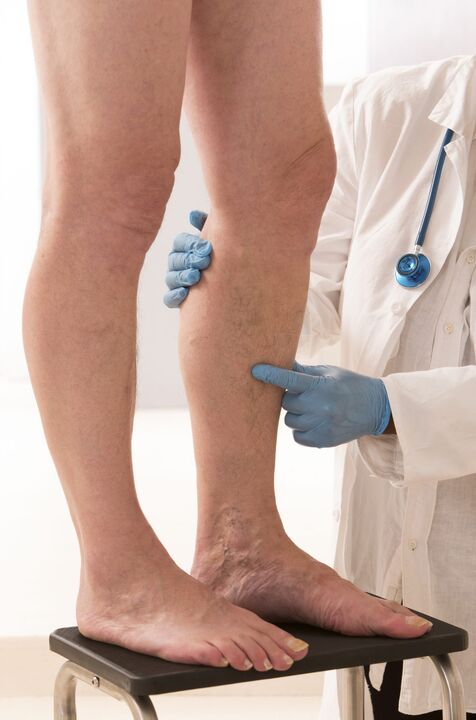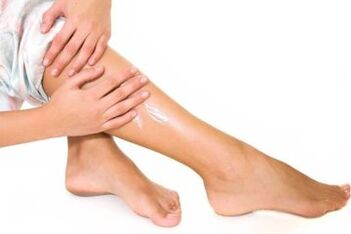Different veins - many people are the subject of this disease, all with the mass of the causes of risks during life with it. The pathological process is most often localized in the legs, affecting the superficial veins undergoing progression, it is able to cause serious harm to health.
However, in addition to the blood vessels located near the surface, varicose veins that are deeply arranged, they are often larger. This type of pathology is able to cause many more problems, to cause serious disorders. In order to withstand diseases, it is important to understand the mechanism of its development, causes, symptoms and also to know the principles of treatment.
If we are generally talking about varicose veins, this term in medicine indicates the disease of the veins, whereby the functions of blood transport from these vessels are impaired due to their deformity of varying severity. In other words, the veins extend, expand, their walls are thinned, the work of the valves located inside, etc. All this leads to the fact that the blood moves worse, heading to the heart and its stagnation in the vessels.
Most people are varicose veins of the lower limbs such as the beginning of individual vessels and vascular network near the surface of the skin. At the same time, the swollen and deformed veins are clearly visible to the naked eye and the performance is true if we speak purely about aesthetic manifestations.
As for deep varicose veins or more varicose veins, we are talking about such disorders, but now they affect the venous vessels located in the thickness of the muscle tissue. This means that even at the most severe stage of the pathological process, these veins will not appear on the surface.
Such a pathological process is dangerous not only with its secret. Deep veins, including small and large berets, calf and others, are much larger. Accordingly, they pass more blood, take a more significant involvement in a large circle of blood circulation, and their damage is more influenced by human health.
This means that in varicose veins, stagnant blood processes are much more serious. At the same time, one may feel severe pain, increased leg fatigue, etc. But even more dangerous consequences are that with too much pressure in the veins, their too thin walls may not withstand, which threatens the tears of the latter and internal bleeding. In the case of deep bleeding veins, depending on the degree of severity and localization, it turns out to be much more severe and dangerous than in extended vessels.
Understanding why varicose veins develop, allows the patient if the development of the disease is not prevented, then at least more successfully fights it and not to give pathology to progress. It is generally worth listing not only the causes of varicose veins, but also contributing factors:
This is the list of the most common causes and factors that provoke the development of expansion of varicose veins on the lower limbs. However, you can also add endocrine disorders, physical damage, etc.
As mentioned earlier, the main disadvantage of deep veins is that its development is carried out unnoticed in the initial stages, before that there are no visual signs of the disease. However, even the initial forms of the pathological process have certain symptoms, which is important to pay attention:
The patient experiences increased fatigue and sensations of weight in the legs, which feel mainly in the afternoon or in the late afternoon. It is characteristic that after relaxation or night's sleep, these signs are scattered and do not worry until the next night, provided that the loads are on the feet during the day; Another worrying feature is swelling of the legs, even insignificant. If the legs swell in the evening or in the morning for no apparent reason, for example, in the absence of kidney pathologies, this may indicate varicose veins. If such symptoms are found, it is very important to consult a doctor for diagnosis. However, the initial stages of varicose veins may occur completely imperceptibly, in which case clinical signs will already occur with the development of 2-3 stages of the disease, they can be as follows:
In addition to fatigue and weight, intensifying in the evening, patients complain of heavy legs. The pain syndrome also has the ability to intensify until the evening, but in the short stages of the disease it can be constantly present. Strengthening the swelling of the limbs, the legs can also swell constantly, while the intensity of the swelling is high, it is impossible to miss them. The defeat and deformation of deep veins in the late stages of the progression of the pathology also affect the surface vessels, which is why venous networks appear on the feet, vascular "stars" appear. The legs also have a convexity of the veins with intense loads. Also, the skin of the lower limbs acquires a bluish shade, especially in those places where the deep vessels are most affected. One of the signs of the progression of the expansion of deep veins is the seizures of the calf muscles, they relate to the patient often, mainly during night's sleep. Diagnostics For diagnostics and diagnostics, as well as for the purposes of more treatment, it is necessary to contact a phlebologist. The doctor who prescribes a number of diagnostic measures, generally the disease detects the disease as follows:
Primary verification with the history of patient collection and complaints. By taking an ultrasound of the vessels of the legs. Dopplerography for the detection of blood clots. Urine tests and blood biochemistry may also be required. Methods of treatment Treatment of deep varicose veins of the lower limbs also requires participation and careful monitoring of a phlebologist. In addition, in order to achieve a maximum therapeutic effect, the treatment must be complicated, it consists of:
Drug therapy. Folk remedies. Wearing compression linen. Surgical intervention. Physical education of medicine. Correction of lifestyle. To understand the principles of treatment, we will look at three basic methods, traditional and non -traditional medicine, as well as surgical treatment.
Medication Depending on the degree of progression of the disease and the patient's complaints, drug therapy includes the use of several groups of medicines:
Anesthesis, among which are used mainly by NSAIDs and muscle relaxants. The basis of treatment is venon, struggling with venous deficiency. Anticoagulants that contribute to a decrease in blood coagulation. Phlebotonics, strengthening the walls of the blood vessels and an increase in lymph leakage. Folk remedies In folk medicine, varicose veins are common for treatment mainly with special compresses and ointments based on natural components. Despite the fact that with damage to deep vessels, they are not as effective, yet a certain therapeutic effect, which is enhanced by connecting with traditional medicine. The following funds are particularly good at this issue:
Alcohol tincture from propolis. Horse chestnut tincture. Fresh cabbage compresses. Baths with essential oils. Surgery However, the most effective method of combating all forms of varicose veins, provided that the disease is progress, is surgery. In this regard, several types of operations can also be distinguished:
Flbectomy - Cutting of the affected area of the vessel. Sclerotherapy is a new method that implies the introduction of a special substance into a vein that adheres to the vessel, after which the latter is gradually replaced by connective tissue. Laser intravascular coagulation is the thermal effect of the affected area of the vein, in which the vascular wall is destroyed and at the same time prevents blood reflux.
























